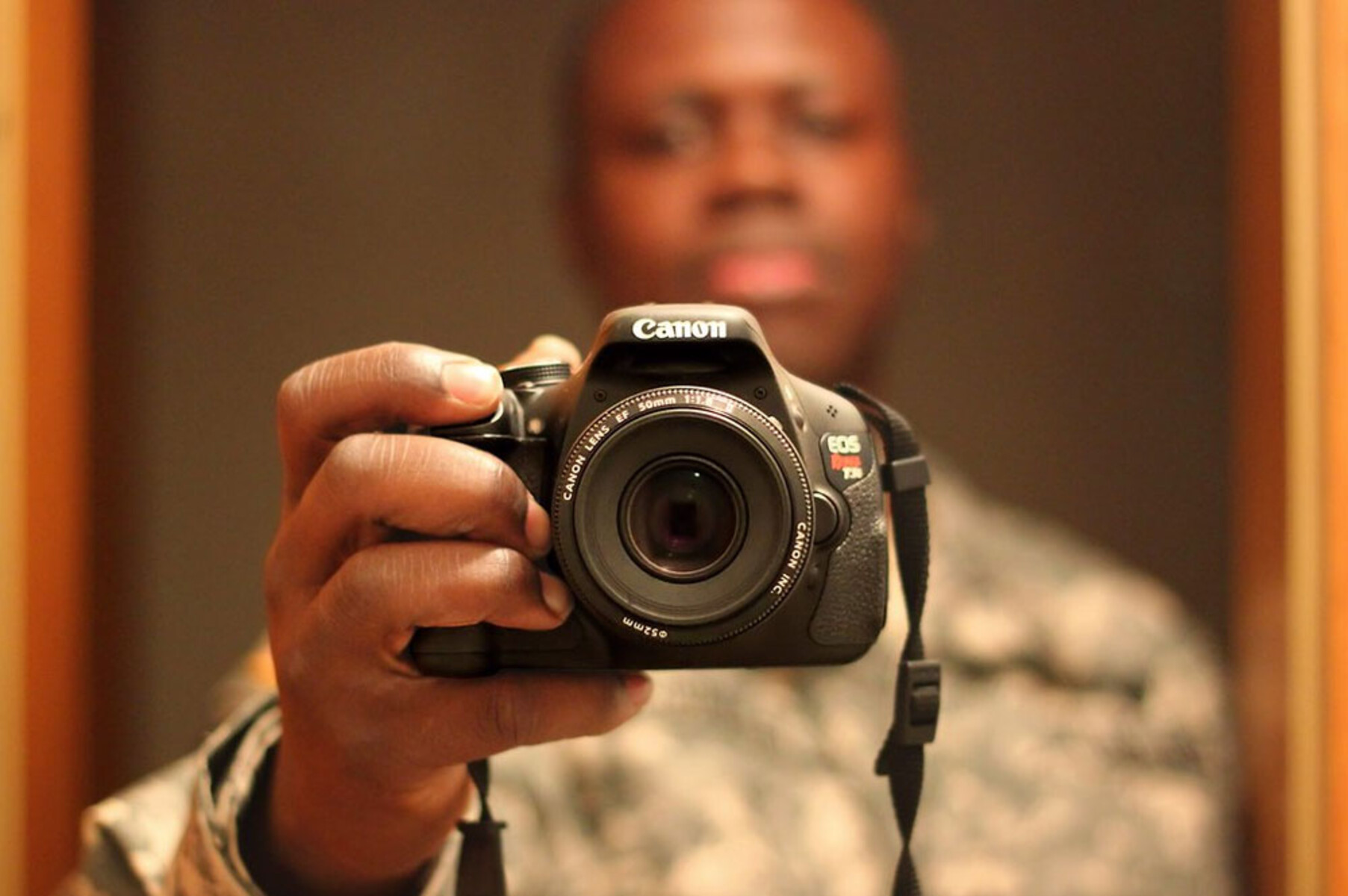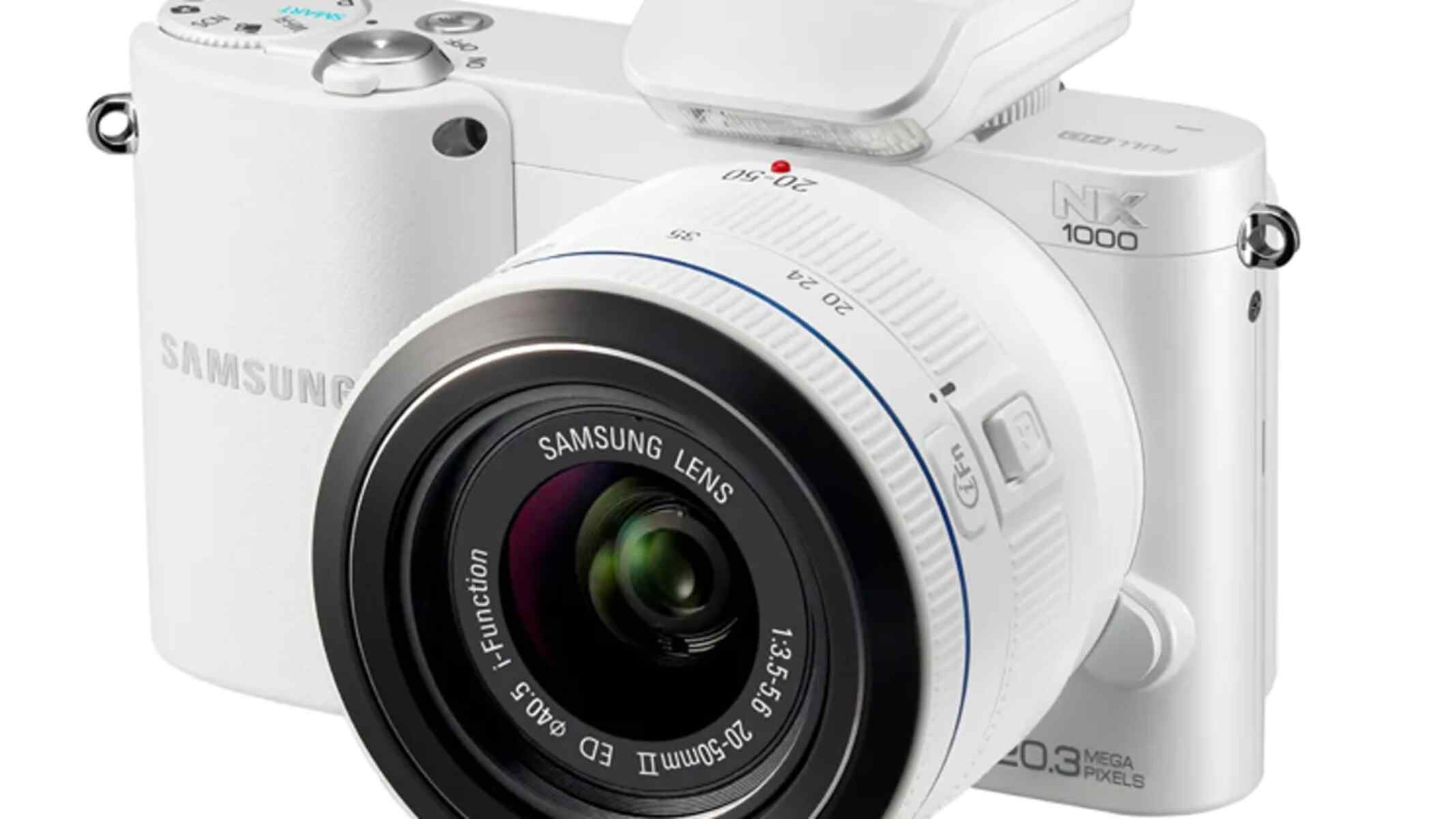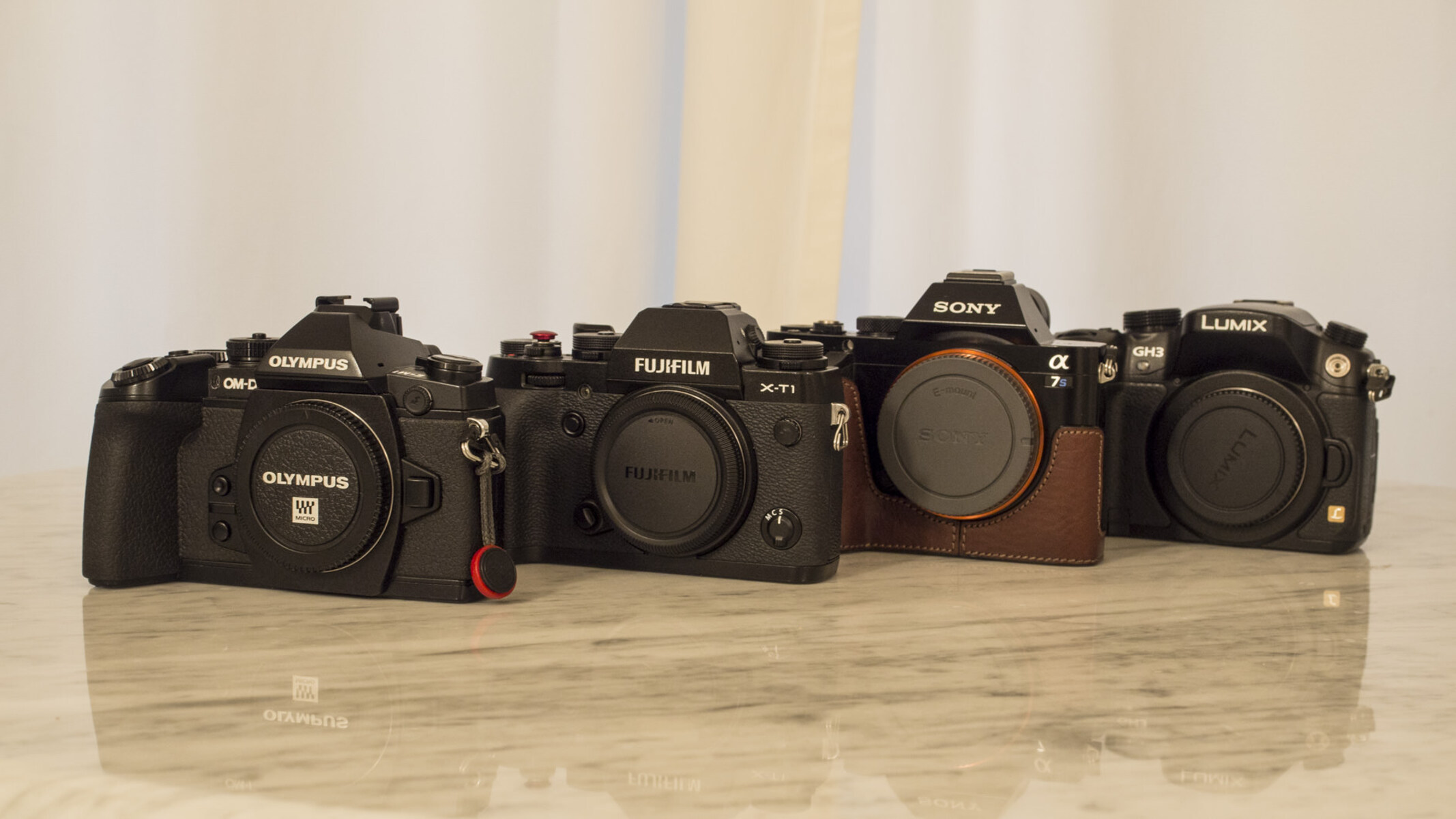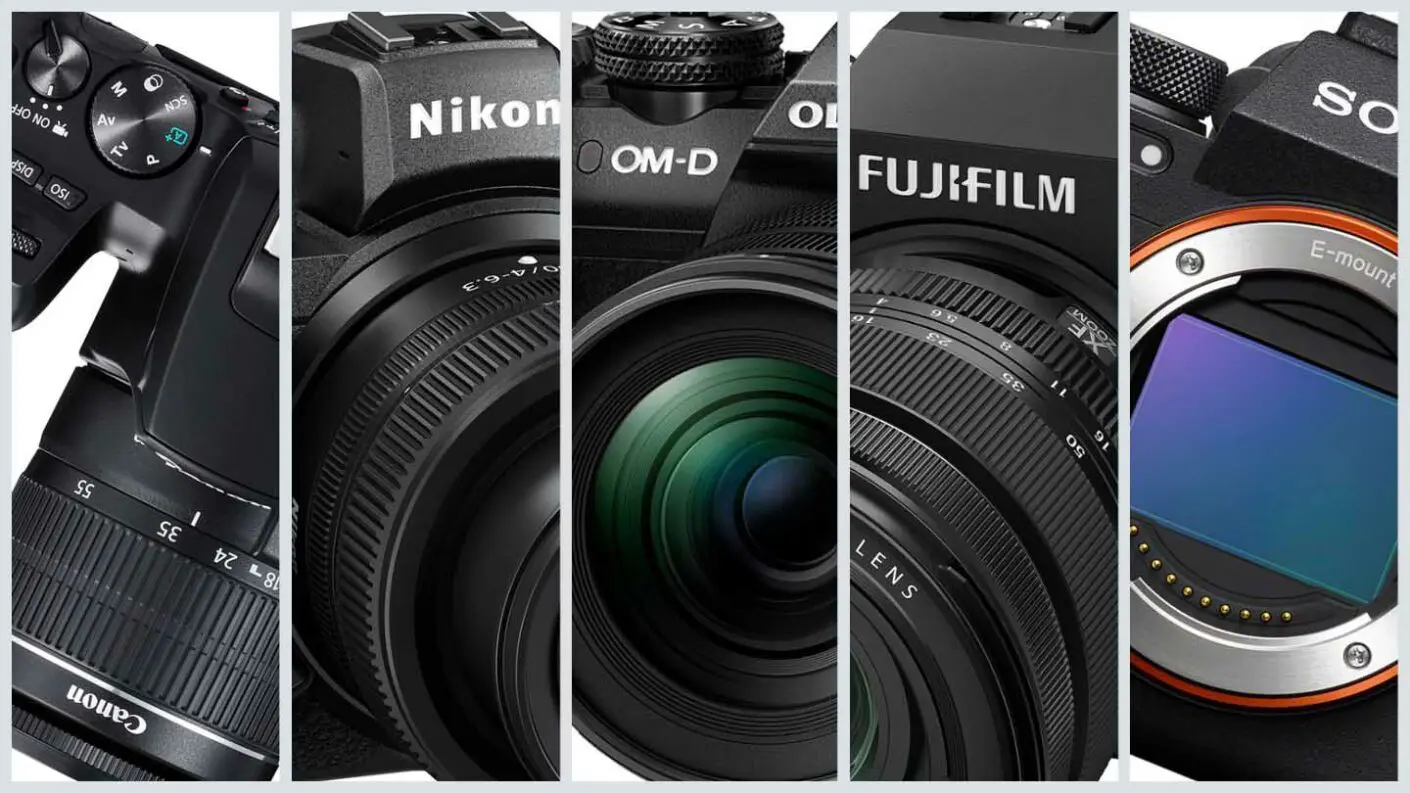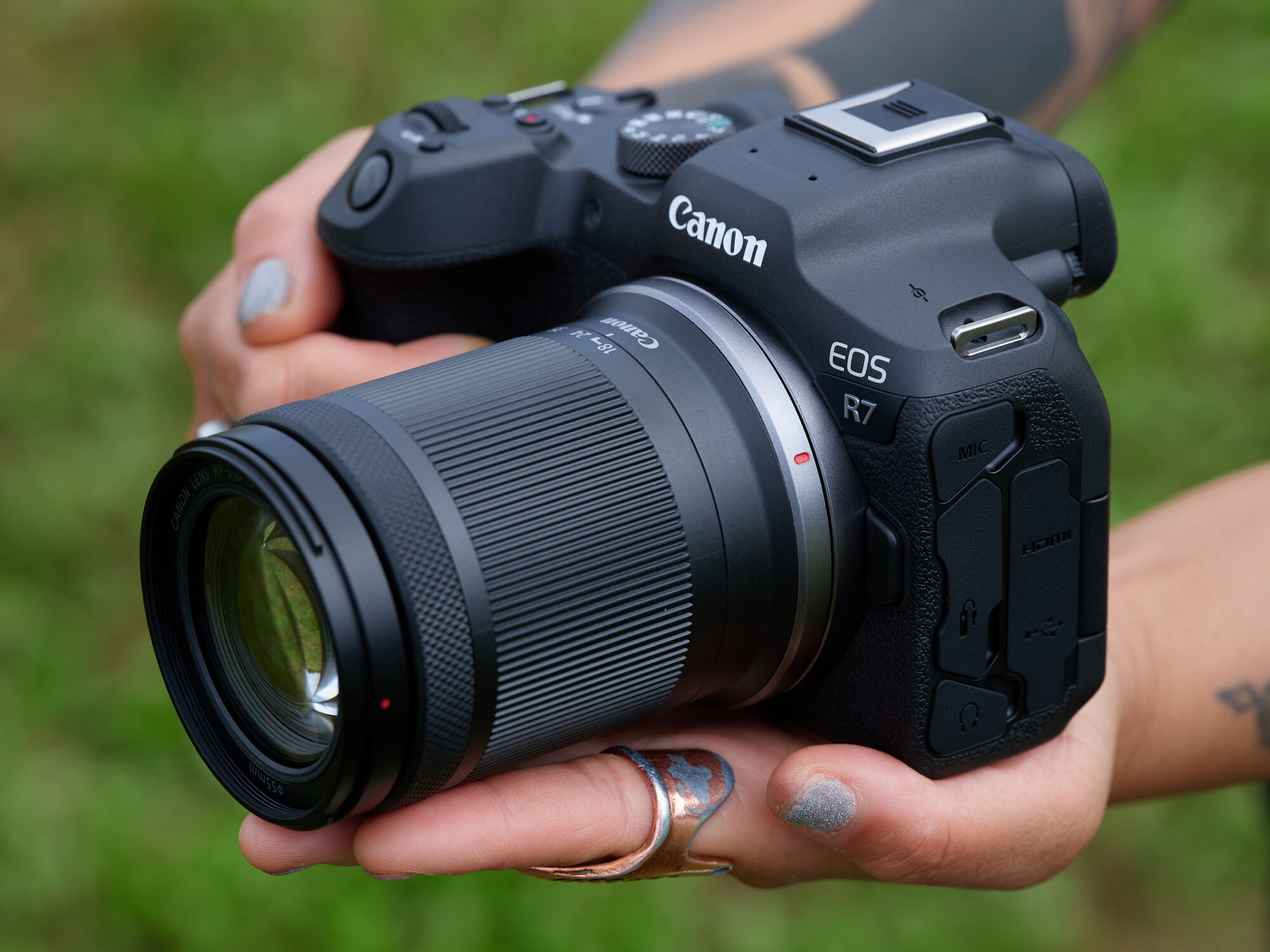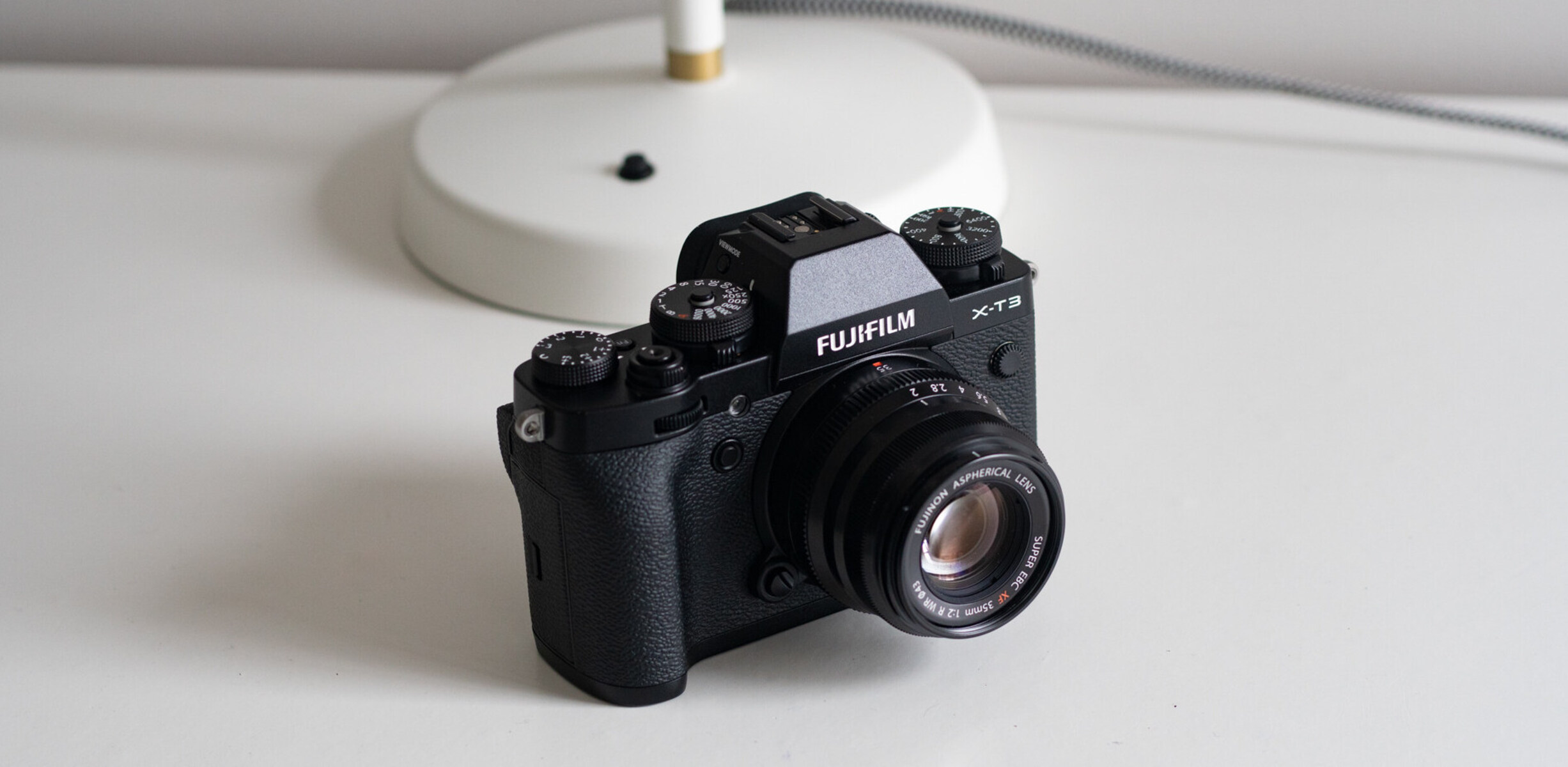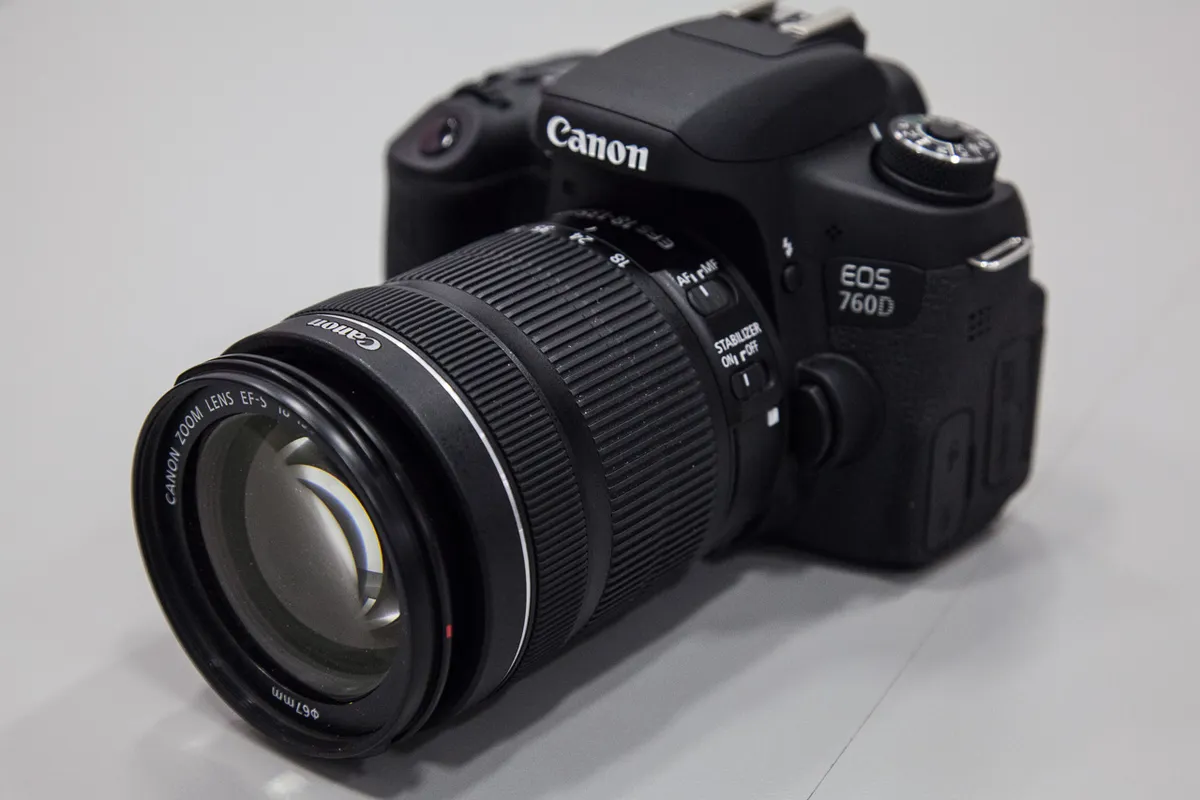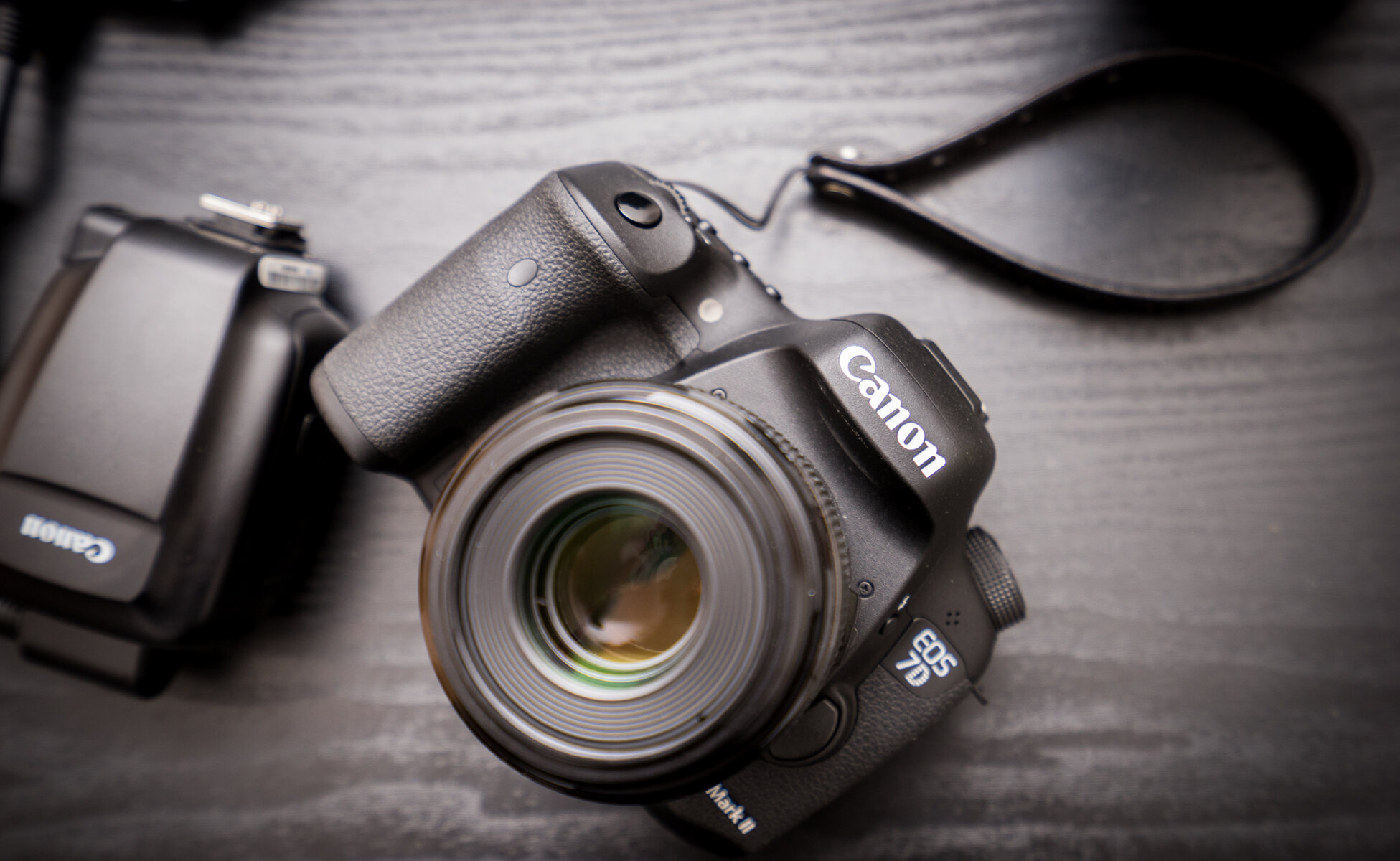Introduction
Taking self-portraits with a mirrorless camera can be a fun and rewarding experience. Whether you're a professional photographer or an amateur enthusiast, capturing your own image allows for creative expression and self-discovery. With the rise of social media and the need for captivating visual content, knowing how to take stunning self-portraits has become a valuable skill.
In this guide, we will explore the essential steps and techniques for achieving impressive self-portraits with a mirrorless camera. From selecting the right equipment to mastering lighting and composition, you'll learn how to create compelling self-portraits that showcase your unique personality and style.
Self-portraiture is a versatile art form that allows you to control every aspect of the image, from the setting and lighting to your pose and expression. Whether you're aiming for professional-looking headshots, artistic self-exploration, or simply documenting your daily life, the process of capturing self-portraits can be both empowering and fulfilling.
Throughout this guide, we will delve into the technical aspects of choosing the right mirrorless camera and lens, setting up your equipment, and utilizing lighting techniques to enhance your self-portraits. Additionally, we'll explore the creative side of self-portraiture, including posing tips, composition techniques, and methods for adding your personal touch to the images.
By the end of this comprehensive guide, you will have the knowledge and confidence to embark on your self-portrait journey, armed with the skills to capture captivating and visually engaging images. Whether you're a solo artist, a social media influencer, or someone who simply wants to create stunning self-portraits, this guide will equip you with the tools and insights to elevate your photography skills and produce compelling self-portraits with a mirrorless camera.
Choosing the Right Mirrorless Camera
When embarking on your self-portrait journey, selecting the right mirrorless camera is crucial to achieving high-quality results. Mirrorless cameras offer a compact and versatile alternative to traditional DSLRs, making them ideal for capturing self-portraits due to their portability and advanced features.
Before making a purchase, consider your specific needs and budget. Entry-level mirrorless cameras are suitable for beginners and offer essential features for self-portraiture, such as interchangeable lenses, articulating screens, and advanced autofocus systems. If you’re an experienced photographer looking for more advanced capabilities and superior image quality, mid-range to professional-grade mirrorless cameras may be the ideal choice.
Key factors to consider when choosing a mirrorless camera for self-portraits include sensor size, resolution, low-light performance, and in-body image stabilization. A larger sensor size, such as APS-C or full-frame, can deliver superior image quality and depth of field, enhancing the overall look of your self-portraits. Additionally, higher resolution sensors provide greater detail and flexibility for cropping and post-processing.
For self-portraiture, a camera with reliable low-light performance is essential, especially if you plan to shoot indoors or in dimly lit environments. Look for a mirrorless camera with a wide ISO range and minimal noise at high ISO settings to ensure crisp and clear self-portraits in various lighting conditions.
In-body image stabilization (IBIS) is another valuable feature to consider, as it minimizes camera shake and allows for sharper self-portraits, particularly when shooting handheld or in low-light situations. Some mirrorless cameras offer advanced IBIS systems that provide stability for both photo and video capture, contributing to the overall quality of your self-portraits.
Ultimately, the right mirrorless camera for self-portraiture should align with your skill level, artistic vision, and intended use. Whether you prioritize portability, advanced features, or exceptional image quality, carefully evaluating the specifications and capabilities of different mirrorless cameras will empower you to make an informed decision that enhances your self-portrait photography.
Selecting the Best Lens for Self-Portraits
Choosing the right lens is a critical aspect of capturing captivating self-portraits with a mirrorless camera. The lens you select can significantly influence the perspective, depth of field, and overall visual impact of your self-portrait images. When considering lenses for self-portraiture, factors such as focal length, aperture, and lens type play a pivotal role in achieving the desired look and creative expression.
Focal length is a key consideration when selecting a lens for self-portraits. For flattering and natural-looking results, prime lenses with focal lengths between 35mm and 85mm are popular choices among portrait photographers. These lenses provide a comfortable working distance and produce minimal distortion, making them well-suited for capturing compelling self-portraits with pleasing proportions and background separation.
Additionally, the aperture of the lens significantly influences the aesthetic quality of self-portraits. A wide aperture, typically found in lenses with low f-stop values (e.g., f/1.8 or f/2.8), allows for shallow depth of field and beautiful background blur, commonly referred to as bokeh. This effect can draw attention to the subject while creating a visually appealing separation between the foreground and background, adding a professional and artistic touch to your self-portraits.
When choosing a lens for self-portraiture, consider the specific visual style you wish to achieve. For environmental self-portraits that incorporate the surroundings, a wider focal length, such as 24mm or 35mm, can provide context and a sense of place within the composition. Conversely, longer focal lengths, such as 50mm or 85mm, are well-suited for close-up portraits, offering flattering compression and emphasizing the subject’s facial features.
Furthermore, the type of lens, whether it’s a prime lens or a zoom lens, impacts your creative flexibility and shooting style. Prime lenses, with a fixed focal length, often deliver exceptional optical quality and wider apertures, making them ideal for achieving professional-looking self-portraits with exquisite bokeh and sharpness. On the other hand, zoom lenses offer versatility and convenience, allowing you to adjust the framing without changing lenses, making them suitable for various self-portrait scenarios.
By carefully considering focal length, aperture, and lens type, you can select the best lens for self-portraits that aligns with your artistic vision and enhances the visual impact of your images. Whether you prioritize versatility, optical performance, or distinctive creative effects, the lens you choose will play a pivotal role in elevating your self-portrait photography with a mirrorless camera.
Setting Up Your Camera and Mirror
Properly setting up your camera and mirror is essential for capturing stunning self-portraits with a mirrorless camera. The arrangement of your equipment, including camera placement, mirror positioning, and the surrounding environment, significantly impacts the composition, framing, and overall visual impact of your self-portrait images. By paying attention to these setup considerations, you can create a conducive and visually engaging environment for capturing compelling self-portraits.
Begin by selecting a suitable location with adequate natural or artificial lighting for your self-portrait session. Consider the background and ambient light sources, ensuring that they complement your desired aesthetic and do not distract from the main subject – you. Whether you opt for a clean and minimalistic backdrop or a visually interesting environment, the setting should enhance the narrative and mood of your self-portraits.
Position your mirrorless camera on a stable surface or tripod at an appropriate distance from the mirror. This distance may vary based on the focal length of the lens and the framing you wish to achieve. Ensure that the camera’s viewfinder or LCD screen provides a clear and unobstructed view of your reflection in the mirror, allowing you to compose the self-portrait effectively.
When setting up the mirror, consider its angle and orientation to capture the most flattering and visually appealing reflection. Experiment with different mirror positions, tilting angles, and heights to find the most complementary and aesthetically pleasing composition for your self-portraits. Additionally, be mindful of any potential distractions or unwanted elements that may be reflected in the mirror, as they can detract from the overall impact of the self-portrait.
Once the camera and mirror are positioned, take the time to fine-tune the composition and framing to align with your creative vision. Pay attention to the placement of your reflection within the frame, ensuring that it complements the overall composition and contributes to the visual storytelling of the self-portrait. Consider experimenting with different angles, poses, and expressions to capture a diverse range of compelling self-portraits.
By thoughtfully setting up your camera and mirror, you can create an environment that fosters creativity and visual impact, allowing you to capture captivating self-portraits with a mirrorless camera. The attention to detail in the setup process contributes to the overall quality and professionalism of your self-portrait images, enabling you to showcase your unique personality and style through the art of self-portraiture.
Lighting Tips for Self-Portraits
Mastering lighting is fundamental to creating compelling and visually striking self-portraits with a mirrorless camera. The interplay of light and shadow directly influences the mood, atmosphere, and overall aesthetic of your self-portrait images. By understanding and implementing effective lighting techniques, you can elevate the quality of your self-portraits and convey your desired emotions and visual narratives.
When planning a self-portrait session, consider the type of lighting that best aligns with your creative vision. Natural light, whether diffused sunlight or the soft glow of golden hour, can impart a warm and flattering illumination, ideal for conveying a sense of intimacy and natural beauty in your self-portraits. Alternatively, artificial lighting, such as studio strobes, continuous LED lights, or portable speedlights, offers precise control over the lighting environment, allowing you to sculpt and shape the light to achieve specific visual effects.
For natural light self-portraits, positioning yourself near a large window or in an outdoor setting during the golden hours of sunrise or sunset can yield stunning results. Soft, diffused natural light creates gentle shadows and a flattering glow, enhancing facial features and imparting a sense of warmth to the self-portrait. Experiment with the direction of light and its interaction with the environment to achieve captivating and dynamic lighting effects.
When utilizing artificial lighting for self-portraits, consider the quality, intensity, and color temperature of the light source. Soft, diffused lighting, achieved through modifiers like softboxes or umbrellas, can create flattering, even illumination with gentle shadow transitions, ideal for capturing professional-looking self-portraits with a polished and refined aesthetic. Additionally, incorporating accent or fill lights can add dimension and depth to your self-portraits, accentuating facial features and creating visual interest.
Understanding the concept of light direction is crucial for sculpting the desired mood and emphasizing facial contours in self-portraits. Experiment with various lighting angles, such as Rembrandt lighting, split lighting, or butterfly lighting, to create captivating and visually engaging self-portraits that convey depth and character. By observing how light interacts with your facial features and experimenting with different lighting setups, you can achieve a diverse range of expressive and impactful self-portraits.
Ultimately, mastering lighting for self-portraits involves a blend of technical knowledge and creative experimentation. Whether you prefer the natural allure of ambient light or the precision of artificial lighting, understanding how light shapes and defines your self-portraits empowers you to convey emotion, narrative, and visual impact through the art of self-portraiture.
Posing and Composition
Posing and composition play a pivotal role in creating visually compelling and impactful self-portraits with a mirrorless camera. Thoughtful consideration of body language, facial expressions, and the arrangement of elements within the frame contributes to the overall storytelling and aesthetic appeal of your self-portrait images. By mastering posing techniques and understanding compositional principles, you can convey your desired emotions and narratives while capturing engaging and visually striking self-portraits.
When posing for self-portraits, focus on conveying natural and authentic expressions that reflect your personality and mood. Experiment with subtle variations in facial expressions, gaze direction, and body posture to evoke a range of emotions and visual narratives in your self-portraits. Whether aiming for a confident and empowered stance, a contemplative and introspective mood, or a lighthearted and joyful demeanor, the nuances of posing can profoundly impact the emotional resonance of your self-portraits.
Consider the composition of your self-portraits to effectively frame the subject within the image. The rule of thirds, a fundamental compositional guideline, can be applied to create visually balanced and harmonious self-portraits. Positioning key elements, such as the eyes or facial features, along the intersecting points of the grid can draw the viewer’s attention and create a sense of visual flow and dynamism within the composition.
Exploring different perspectives and angles can add visual interest and depth to your self-portraits. Experiment with varying camera heights, shooting angles, and focal lengths to capture unique and compelling compositions that accentuate your features and convey a distinct visual narrative. Whether opting for close-up portraits that emphasize facial details or environmental self-portraits that incorporate the surrounding context, the composition should enhance the overall storytelling and visual impact of your self-portraits.
Utilize leading lines, framing elements, and negative space to guide the viewer’s gaze and create a sense of depth and dimension within your self-portraits. Incorporating visual elements that complement and interact with the subject can enrich the composition, adding layers of narrative and visual intrigue to the self-portrait image. Additionally, be mindful of the background and its contribution to the overall composition, ensuring that it complements and enhances the subject rather than detracting from the focal point.
By mastering the art of posing and composition, you can infuse your self-portraits with emotion, narrative, and visual impact, capturing compelling and visually engaging images that reflect your unique personality and style. Thoughtful consideration of posing techniques and compositional principles empowers you to convey your desired messages and emotions while creating self-portraits that resonate with authenticity and visual allure.
Using Remote Shutter or Self-Timer
When capturing self-portraits with a mirrorless camera, employing a remote shutter release or self-timer function is essential for achieving sharp, well-composed images while maintaining control over the shooting process. These tools enable you to trigger the camera’s shutter without physically pressing the button, allowing for greater flexibility in posing, composition, and overall creative expression during your self-portrait sessions.
A remote shutter release, whether in the form of a wired or wireless remote, provides the convenience of triggering the camera’s shutter from a distance. This eliminates the need to manually touch the camera, reducing the risk of camera shake and ensuring sharper self-portrait images, particularly when using longer focal lengths or slower shutter speeds. Additionally, a remote shutter release allows for seamless control over the timing of each shot, enabling you to capture a series of self-portraits with precision and ease.
Alternatively, utilizing the self-timer function built into your mirrorless camera offers a simple and effective way to capture self-portraits without the need for additional accessories. By setting a brief delay between pressing the shutter release and the actual exposure, the self-timer allows you to position yourself, compose the frame, and prepare for the shot before the camera automatically takes the picture. This feature is especially useful when capturing self-portraits in scenarios where a remote shutter release may not be practical or available.
When using a remote shutter release or self-timer for self-portraits, consider the timing and rhythm of your poses and expressions to achieve a diverse range of compelling images. Experiment with different intervals between shots, allowing for natural and spontaneous variations in your self-portrait series. Additionally, leverage the flexibility provided by these tools to explore dynamic poses, movements, and interactions with the environment, adding depth and visual interest to your self-portrait images.
Furthermore, the use of a remote shutter release or self-timer encourages a relaxed and unhurried approach to self-portraiture, fostering a comfortable and natural shooting environment. This relaxed atmosphere can lead to more authentic and expressive self-portraits, as you have the freedom to focus on conveying emotions and storytelling without the distraction of manually operating the camera.
By incorporating a remote shutter release or self-timer into your self-portrait workflow, you can enhance the precision, creative freedom, and overall quality of your self-portrait images. These tools empower you to capture compelling and visually engaging self-portraits with ease, allowing you to focus on artistic expression and storytelling while maintaining control over the technical aspects of the photography process.
Editing and Enhancing Your Self-Portraits
After capturing self-portraits with your mirrorless camera, the process of editing and enhancing the images is crucial for refining the visual impact, conveying your intended mood, and achieving a polished, professional look. Whether you prefer to use dedicated photo editing software or mobile applications, the post-processing stage allows you to fine-tune your self-portraits, correct imperfections, and add creative touches that elevate the overall quality of the images.
Begin the editing process by reviewing your self-portraits and selecting the images that best convey your desired emotions and visual narratives. Pay attention to factors such as composition, exposure, and facial expressions, ensuring that the chosen images align with your artistic vision and storytelling objectives. Once the selection is made, proceed to the editing phase with a clear understanding of the desired outcome for each self-portrait.
Adjusting exposure, contrast, and color balance is fundamental to enhancing the visual appeal and mood of your self-portraits. Fine-tune the overall tonal range and contrast to ensure that the subject stands out while maintaining a balanced and natural appearance. Additionally, consider color adjustments to achieve a cohesive and harmonious color palette that complements the mood and atmosphere of the self-portrait.
When editing self-portraits, focus on refining skin tones and texture while preserving a natural and authentic look. Utilize tools for skin retouching and blemish removal to enhance the appearance of the skin while maintaining its genuine texture and characteristics. Approach skin retouching with subtlety, aiming to achieve a polished yet realistic portrayal of your features.
Experiment with creative effects and enhancements to add a distinctive touch to your self-portraits. Consider applying selective sharpening to accentuate facial details, adding vignettes to draw attention to the subject, or incorporating subtle gradients and filters to enhance the overall mood and atmosphere. By exploring creative editing techniques, you can infuse your self-portraits with a unique and personalized aesthetic.
Furthermore, consider the aspect of storytelling and emotional resonance when editing self-portraits. Strive to convey your intended emotions and narratives through the editing process, whether by enhancing the expressiveness of facial features, refining the visual composition, or adding subtle elements that contribute to the overall storytelling of the image.
Ultimately, the editing and enhancing stage of self-portraiture allows you to refine and amplify the visual impact of your images, conveying your unique personality and style through polished and professionally crafted self-portraits. By approaching the editing process with creativity, precision, and a clear artistic vision, you can transform your self-portraits into captivating and visually engaging works of art that resonate with authenticity and allure.







